We enjoy fresh cranberries from local farms in the Northwoods of Wisconsin.
(Affiliate links are used for your convenience. Read my full disclosure here.)

The Joy of Cranberries: A Superfood for the Season
Cranberries are one of the few fruits native to North America, and they have certainly earned their place as a beloved holiday staple. Whether they’re swirling in a tangy sauce at Thanksgiving dinner, adding a burst of color to a winter salad, or starring in a refreshing juice, cranberries offer a delightful mix of tartness, flavor, and nutrition. But beyond their seasonal popularity, cranberries are a superfood with a fascinating history and a wealth of health benefits. But truly these vibrant red berries deserve a spot in our kitchens all year long.
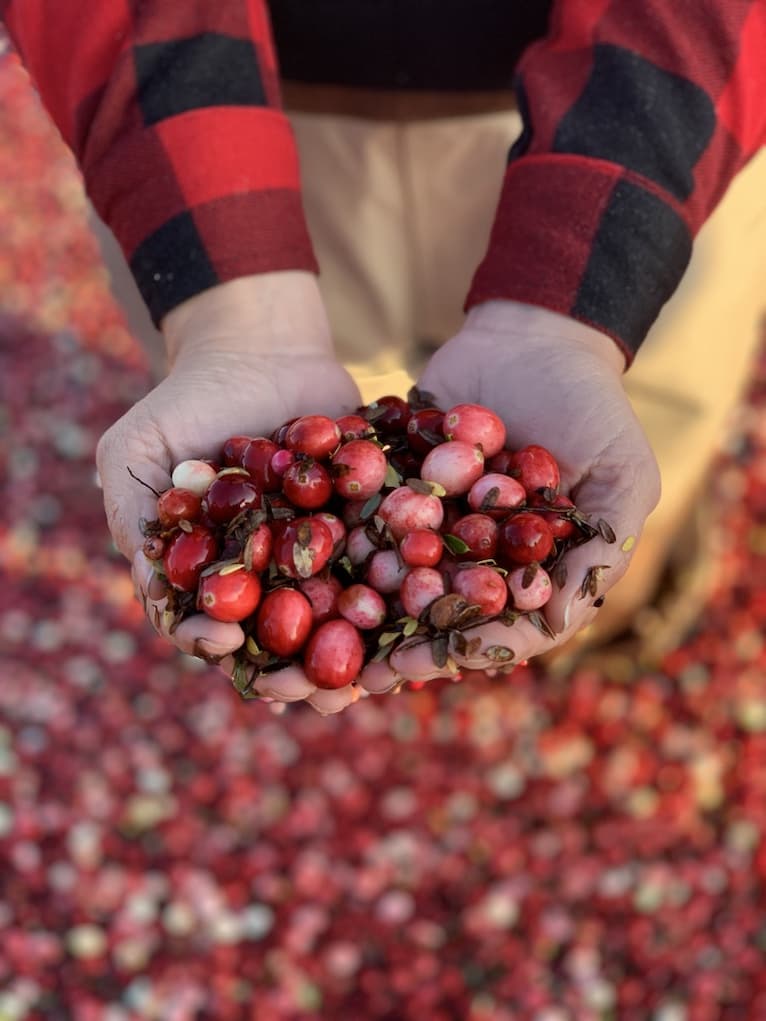
I honestly never thought too much about cranberries until the past several years. I knew I loved a glass of cranberry juice, munching on Craisins and adding cranberries in recipes, but never thought deeper.
After moving to the Northwoods of Wisconsin, where there a several cranberry farms in Manitowish Waters, I became so curious, interested and fascinated.
There are farms that open up to tours each year and offer field trips to students.
I’ve been blessed to get some behind the scenes tours and events at one of the farms owned by a friend whose husband is a fourth generation farmer at Bartling’s Manitowish Cranberry Company. They are a proud grower/owner with Ocean Spray. They don’t offer public tours, but have an amazing website full of photos, history and information- a cranberry 101.

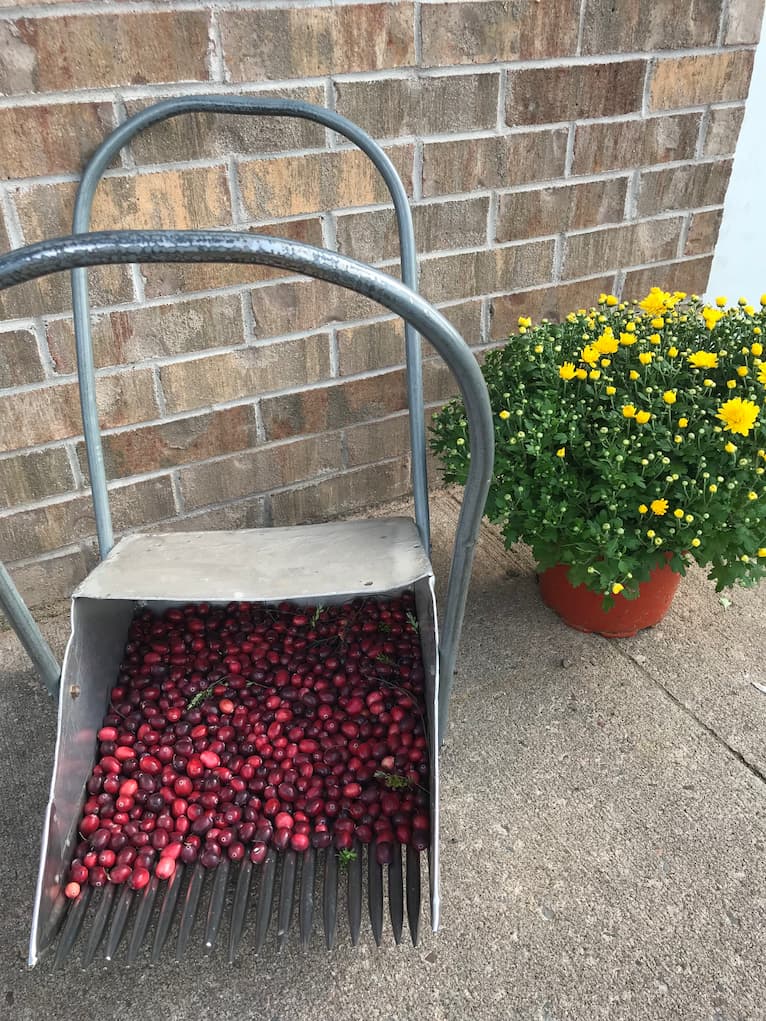
Other areas in the Northwoods have farms as well and Eagle River celebrates with a large Cranberry Festival the first weekend in October each year.
The History of Cranberries
Cranberries have a rich history in North America, where they’ve been cultivated for centuries. Native American tribes were the first to recognize the berry’s medicinal and nutritional properties. They used cranberries for everything from treating urinary tract infections to dyeing fabrics, and even in making pemmican—a high-energy mixture of berries, meat, and fat used by hunters and travelers. Early European settlers adopted these uses, and cranberries soon became a key part of the American diet, especially during the fall harvest.
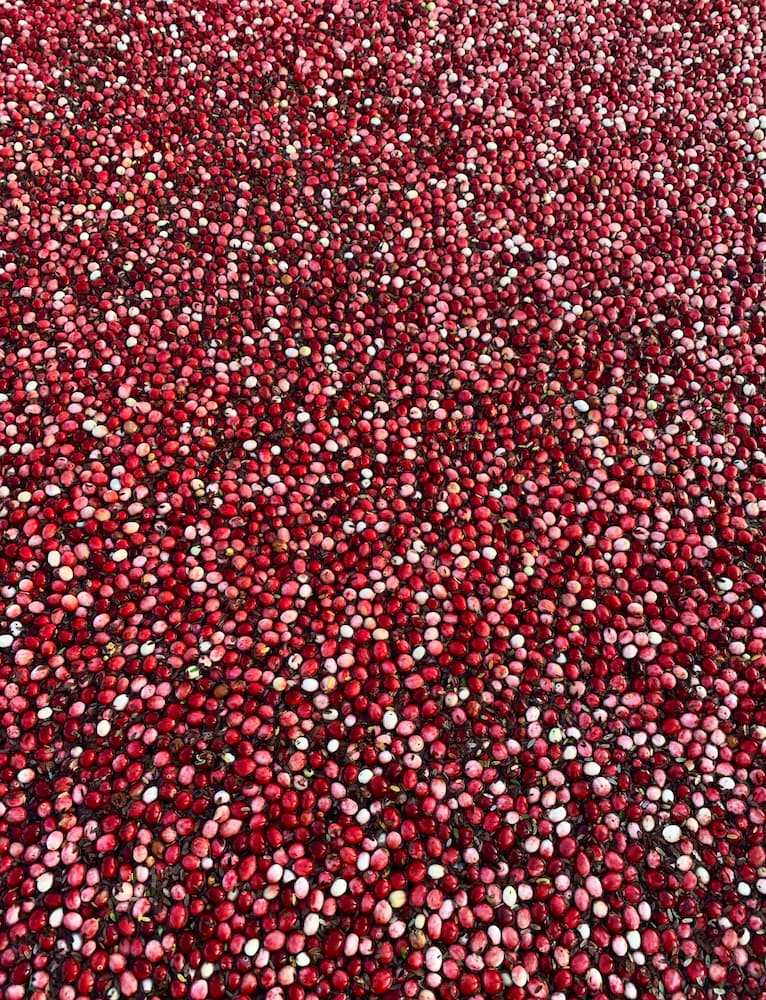
Today, the United States and Canada are the primary producers of cranberries, with Wisconsin and Massachusetts leading the way in cultivation. The distinctive bogs where cranberries grow are flooded during harvest season, creating the picturesque “ocean” of red berries that many of us associate with cranberry farms.
Want to get daily encouragement? SUBSCRIBE HERE so you don’t miss any posts!
Health Benefits of Cranberries
Cranberries are more than just a festive fruit—they’re packed with nutrients that can support your health in a variety of ways.
1. Rich in Antioxidants: Cranberries are a powerhouse of antioxidants, particularly vitamin C and flavonoids, which help to combat oxidative stress in the body. Antioxidants protect cells from damage caused by free radicals, contributing to overall health and reducing the risk of chronic diseases like heart disease, cancer, and diabetes.
2. Urinary Tract Health: One of the most well-known health benefits of cranberries is their role in preventing urinary tract infections (UTIs). Cranberries contain compounds called proanthocyanidins that prevent harmful bacteria from adhering to the urinary tract, reducing the likelihood of infection. While they’re not a cure for UTIs, cranberries can be a helpful preventative measure.
3. Heart Health: The antioxidants in cranberries, along with their fiber and anti-inflammatory properties, can contribute to heart health by improving blood pressure, reducing cholesterol levels, and lowering the risk of cardiovascular diseases. Some studies have shown that regular consumption of cranberries may help reduce the buildup of plaque in the arteries, which is linked to atherosclerosis.
4. Gut Health: Cranberries are rich in dietary fiber, which is essential for digestive health. Fiber promotes healthy digestion, aids in regular bowel movements, and supports a balanced gut microbiome. Additionally, the natural compounds in cranberries may help prevent the growth of harmful bacteria in the gut, contributing to overall digestive wellness.
5. Immune Support: Cranberries are high in vitamin C, which plays a crucial role in strengthening the immune system. Vitamin C helps to fight off infections, reduce inflammation, and support healthy skin. This makes cranberries a great addition to your diet, especially during cold and flu season.
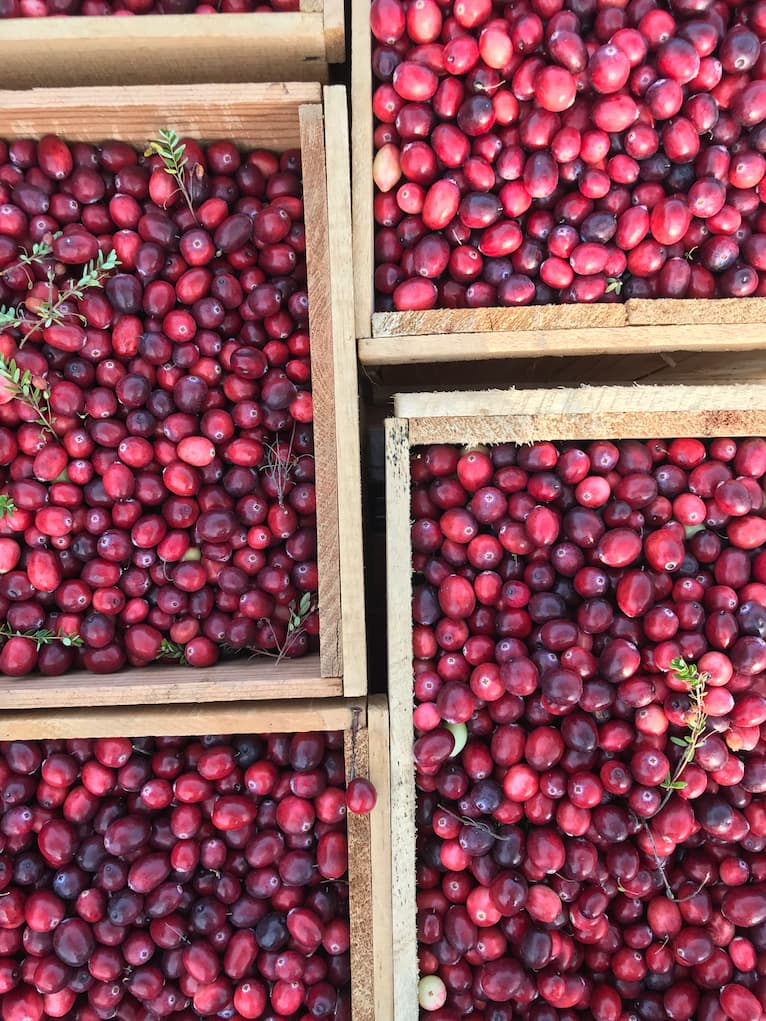
Creative Ways to Enjoy Cranberries
While cranberries are most commonly used in sauces and baked goods during the holiday season, they can be enjoyed in a variety of ways throughout the year. Here are some ideas for incorporating more cranberries into your meals:
1. Fresh Cranberry Sauce: Homemade cranberry sauce is easy to make and much fresher than the canned variety. Simply simmer fresh cranberries with sugar, orange zest, and a touch of cinnamon until the berries burst and the sauce thickens. This vibrant sauce can be served as a topping for turkey, roasted vegetables, or even yogurt.
2. Cranberry Smoothies: Add a handful of fresh or frozen cranberries to your morning smoothie for a tart, refreshing twist. Pair them with other fruits like bananas, oranges, and strawberries, and blend with yogurt or almond milk for a delicious, nutrient-packed breakfast or snack.
3. Cranberry Relish or Chutney: For a more savory take on cranberries, make a relish or chutney by combining cranberries with onions, ginger, garlic, and vinegar. This can be served alongside meats like chicken, pork, or lamb to add a sweet and tangy kick.
4. Dried Cranberries: Dried cranberries are a convenient snack that you can toss into trail mixes, salads, or oatmeal. Be mindful to choose unsweetened dried cranberries, as many commercial varieties are packed with added sugar. Alternatively, you can make your own dried cranberries at home by dehydrating fresh berries in an oven or dehydrator.
5. Cranberry Baked Goods: Cranberries add a burst of tart flavor to muffins, cakes, and cookies. For a festive touch, try adding them to classic recipes like banana bread, scones, or shortbread cookies. Their tangy bite contrasts wonderfully with the sweetness of sugar or chocolate chips.
6. Cranberry Cocktails: Cranberries are the perfect ingredient for holiday cocktails. A splash of cranberry juice can elevate a classic vodka cranberry, or you can make a cranberry mojito with fresh berries, mint, lime, and rum. For a warm winter drink, mix cranberry juice with a splash of cinnamon and serve it hot with a cinnamon stick garnish.

Where to Find Cranberries
Fresh cranberries are typically available in the fall and early winter months, so be sure to stock up during this time. You can find them in most grocery stores, often in the produce section. If fresh cranberries aren’t available, frozen cranberries are a great alternative and can be used in most recipes.
For dried cranberries, look for options with minimal added sugar or try making your own. Many health food stores also offer organic or unsweetened dried cranberries. You can even find cranberry extracts and supplements if you’re interested in their health benefits, particularly for urinary tract health.
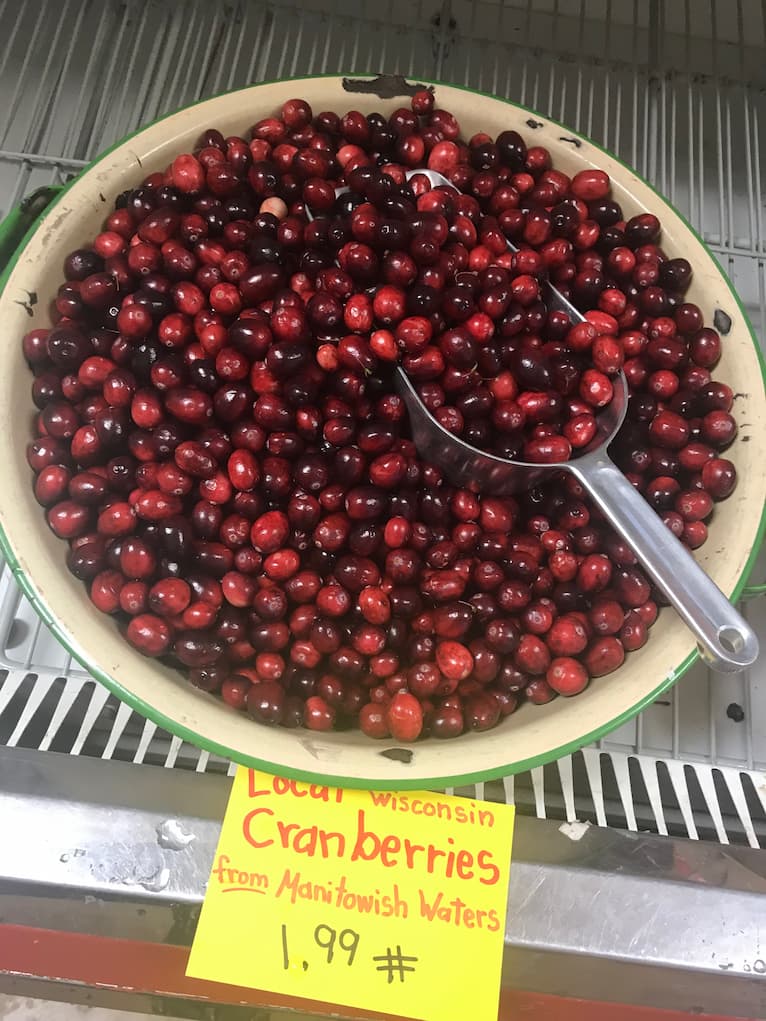
Cranberries are more than just a holiday treat—they’re a powerhouse fruit with a host of health benefits and endless culinary possibilities. Whether you’re enjoying them fresh, dried, or juiced, cranberries bring a bright, tart flavor to your dishes while supporting your health in a variety of ways.
Plan a visit to the Northwoods of Wisconsin in the Fall around the cranberry harvest and take a tour. Stock up on fresh berries to take home to put in the freezer to pull out for recipes, to add antioxidants to your wellness routine and to add a festive touch and a little extra cheer to your decor.
FOLLOW ALONG
Instagram ~ Facebook ~ Pinterest ~ Twitter ~ YouTube ~ Tik Tok ~ Liketoknow.it


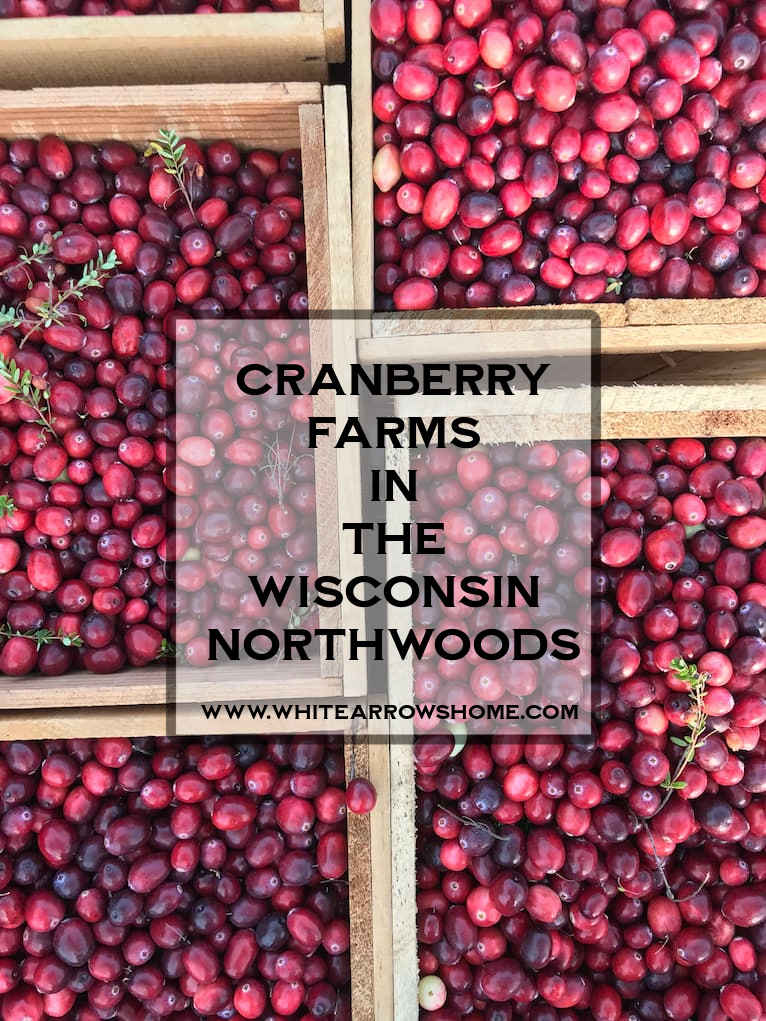




[…] special things about living in the Northwoods is that there are cranberry farms here. I shared in THIS POST about visiting […]